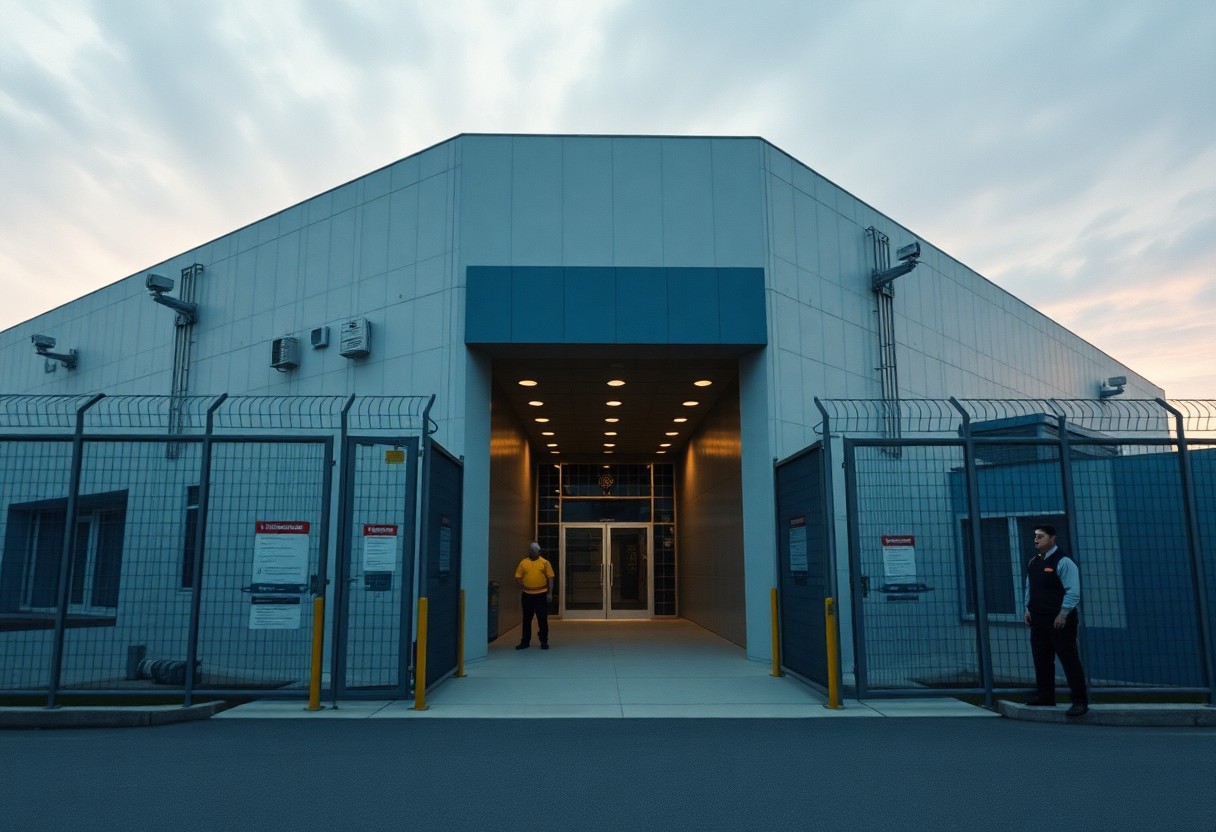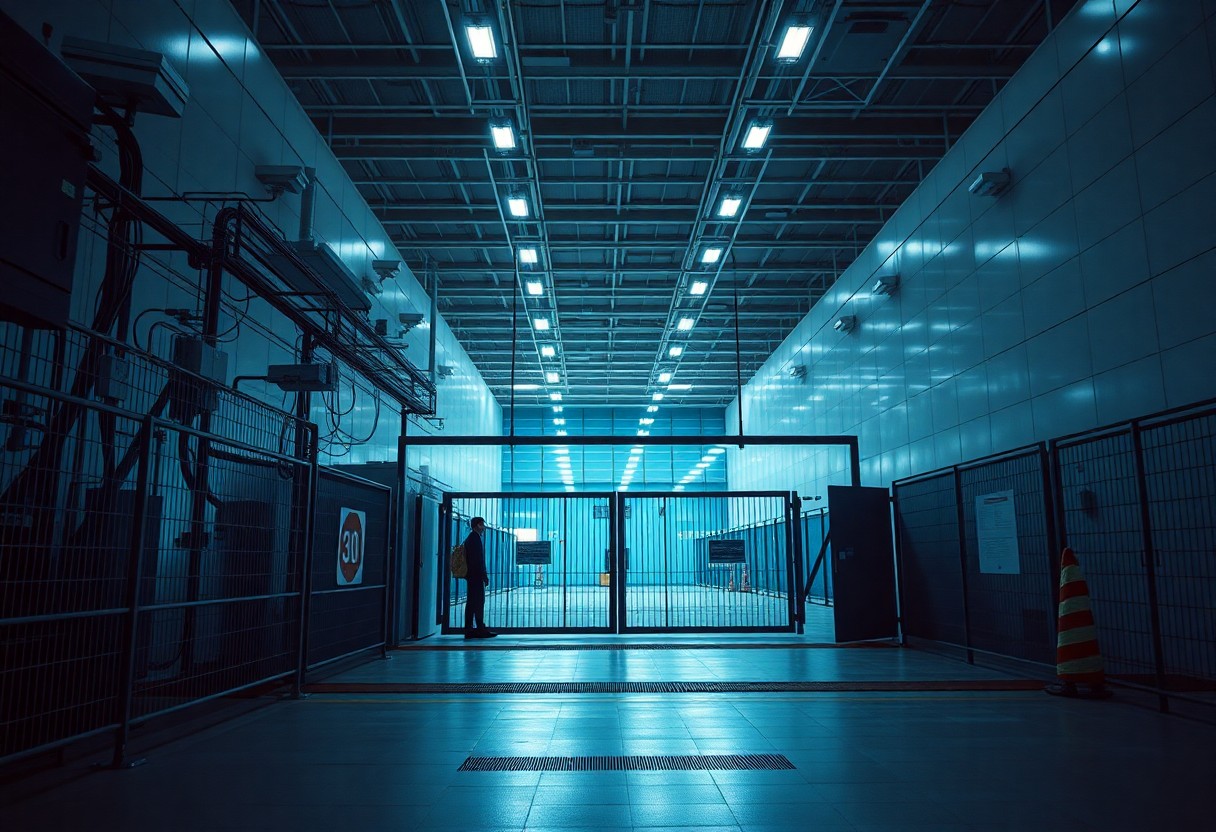Physical security is paramount for big tech companies, as their data centers house vast amounts of sensitive information. In this deep dive, you will explore the comprehensive strategies that these industry leaders implement to safeguard their facilities. From advanced surveillance systems to controlled access measures, you’ll gain insights into the multilayered approaches that protect against various threats. Understanding these strategies can help you appreciate the complexities of data security and the importance of maintaining robust physical protections in our increasingly digital world.
Physical Security Measures
As data centers house sensitive information, Big Tech companies employ robust physical security measures to safeguard their infrastructures. These measures encompass a range of strategies, including access control systems, surveillance technologies, and perimeter security, all designed to mitigate risks and ensure the integrity of data processing and storage. Your understanding of these methodologies will shed light on how these entities maintain secure environments for their valuable resources.
Access Control Systems
Control measures are vital in restricting unauthorized personnel from entering data centers. Companies implement sophisticated access control systems, including biometric verification and key card entry, ensuring only authorized employees can access sensitive areas. You will find these systems serve as the first line of defense, effectively managing who enters and exits the facility while simultaneously recording access logs for accountability.
Surveillance Technologies
Around the clock monitoring is imperative for maintaining optimal security within data centers. Surveillance technologies, such as high-definition cameras and motion detection systems, play a significant role in fortifying safety. You benefit from knowing that these systems not only deter potential intruders but also provide valuable insights during investigations of security incidents.
For instance, the integration of artificial intelligence into surveillance equipment enhances the ability to identify suspicious behaviors in real-time, allowing security teams to respond promptly to potential threats. Furthermore, video surveillance is often coupled with data analytics, enabling you to review historical footage and track patterns that could point to vulnerabilities in your security strategy. The continuous evolution of surveillance technology means that you can expect ongoing enhancements in the ways data centers protect their environments.

Environmental Controls
Assuming you’re looking to understand how big tech companies safeguard their data centers, you’ll find that environmental controls play a vital role in maintaining optimal operational conditions. These strategies are designed to protect sensitive equipment from potential damage caused by fire, humidity, and temperature fluctuations. By focusing on these systems, companies ensure the longevity of their hardware and the security of your data.
Fire Protection Systems
On the front lines of fire safety, organizations deploy advanced fire protection systems that include smoke detectors, fire suppression systems, and fire-resistant materials. These technologies work in tandem to quickly identify and mitigate fire risks, offering a high level of protection for both your data and the physical infrastructure of the data center.
Climate Control and Cooling
Among the primary considerations for data center reliability is effective climate control and cooling. Maintaining ideal temperature and humidity levels helps manage the heat generated by high-density servers, ensuring they operate within safe parameters.
But managing climate control extends beyond simple temperature regulation; it’s about implementing top-tier cooling solutions like hot aisle containment, liquid cooling systems, and energy-efficient HVAC units. These systems help create a stable environment that minimizes the risks of overheating while promoting energy efficiency. By investing in these technologies, big tech companies protect your valuable data and enhance operational efficiency in an increasingly data-driven world.

Disaster Recovery Planning
Unlike traditional businesses, Big Tech companies prioritize disaster recovery planning as an integral aspect of their operations. They develop comprehensive strategies to ensure business continuity in the face of unforeseen events such as natural disasters, cyberattacks, or hardware malfunctions. This involves meticulous planning that includes detailed recovery protocols, regular testing of systems, and ongoing employee training to minimize downtime and data loss. By preparing for potential disasters, you position your organization for a swift recovery, preserving both data integrity and client trust.
Backup Power Solutions
Across the data center landscape, reliable backup power solutions are indispensable for maintaining continuous operations. Tech giants implement robust systems such as uninterruptible power supplies (UPS) and backup generators that seamlessly kick in during power outages. These measures ensure that your data remains protected and available, even during unexpected interruptions. Additionally, regular maintenance and testing of these systems help you stay prepared for any eventuality, giving you peace of mind in your operational readiness.
Redundancy and Geographical Distribution
Backup systems are imperative in ensuring minimal disruption during unforeseen events. Big Tech companies often employ redundancy through replication across multiple data centers situated in various geographical locations. This distribution safeguards your business against localized disasters, as it allows for data recovery and continuity from alternative sites. By diversifying your infrastructure, you mitigate risks and reinforce your resilience in the face of incidents that could impact a single location.
Further, this strategy not only enhances your disaster recovery capabilities but also optimizes performance and accessibility. If one data center is compromised due to a natural disaster or power failure, your operations can seamlessly transition to another site, reducing downtime and maintaining service levels. This geographical distribution allows you to serve customers effectively regardless of regional setbacks, ensuring that your data remains safe and your business operations are not severely interrupted.
Employee Training and Awareness
Many big tech companies understand that the first line of defense against security breaches lies in their employees. By fostering a culture of security awareness, these organizations ensure that you are equipped with the knowledge to recognize potential threats and respond appropriately. Training programs often cover a range of topics, from recognizing phishing attempts to understanding the importance of access controls, all aimed at making you a vigilant participant in safeguarding data center integrity.
Security Protocols for Personnel
About security protocols, big tech companies develop comprehensive guidelines that outline clear procedures and responsibilities for all personnel. These protocols often dictate access to sensitive areas, specify identification requirements, and establish reporting procedures for suspicious activities. By adhering to these protocols, you contribute to a structured environment that limits potential vulnerabilities and enhances overall security.
Ongoing Training Programs
Between initial onboarding and ongoing security training, employees engage in regular refreshers to stay updated on the latest threats and security measures. Your participation in these ongoing training programs reinforces your understanding of best practices and keeps security at the forefront of your daily activities.
Due to the rapidly evolving nature of cyber threats, ongoing training programs are important for maintaining your preparedness. These programs often include simulation exercises, vulnerability assessments, and updates on new technologies or policies. With constant engagement, you are better equipped to identify risks and respond effectively, turning security awareness into a part of your everyday routine, rather than a one-time lesson.

Vendor and Supply Chain Security
Keep in mind that safeguarding data extends beyond your data center walls. Effective vendor and supply chain security involves stringent assessments of third-party partnerships, ensuring that your sensitive information remains protected at every stage. By focusing on the security measures employed by your vendors and their suppliers, you can minimize the risks associated with outsourcing critical functions.
Third-Party Assessments
Above all, it’s vital to evaluate the security protocols of your vendors regularly. Conducting thorough assessments helps you confirm that their systems align with your security standards. This not only protects your data but also fosters a culture of accountability within your supply chain.
Secure Logistics and Transportation
At every step in your supply chain, ensuring secure logistics and transportation is paramount. Implement strategies that prioritize the protection of physical assets and data throughout the shipping process.
Even the best systems can be undermined if your logistics and transportation are not secure. Consider employing tamper-evident packaging and real-time tracking technology to monitor shipments. Train your logistics teams on best practices for safeguarding assets and establish protocols for handling potential security breaches during transit. By adopting these measures, you can significantly reduce the risk of unauthorized access and maintain the integrity of your data at all points in the supply chain.
Compliance and Regulatory Considerations
Your data security measures must align with compliance and regulatory frameworks, ensuring that your strategies meet industry-specific requirements. These regulations govern how organizations manage sensitive information, making it vital for you to stay informed about the evolving legal landscape surrounding data protection and privacy. Failing to comply could not only result in severe penalties but also potential damage to your reputation.
Industry Standards and Best Practices
Before you implement security measures, familiarize yourself with industry standards and best practices. Frameworks such as ISO 27001, NIST, and CIS provide guidelines that can help you develop a robust physical security strategy for your data centers. By adhering to these standards, you can enhance your security posture and provide assurance to stakeholders regarding the safeguarding of sensitive information.
Legal Obligations for Data Protection
Beside following industry standards, understanding your legal obligations for data protection is vital. Various laws, such as GDPR, HIPAA, and CCPA, establish strict guidelines for how you should handle, store, and process sensitive data. Non-compliance with these regulations not only exposes you to legal risks but can also lead to financial repercussions that may impact your organization’s viability.
Industry regulations are designed to hold organizations accountable for the safety of personal and sensitive information. You need to be aware of specific requirements that may apply to your data handling practices, including data breach notification protocols, user consent provisions, and data access rights. Integrating compliance into your security strategy ensures that your data centers not only operate effectively but also ethically, maintaining the trust of your clients and stakeholders.
To wrap up
The analysis of how Big Tech companies in Canada protect their data centers reveals the importance of robust physical security strategies in safeguarding your data. You gain insights into advanced measures like biometric access controls, surveillance systems, and environmental controls that mitigate risks. Understanding these strategies empowers you to appreciate the depth of security efforts put forth by these companies. As you consider your own security needs, these insights can inform your approach to data protection and risk management in an increasingly digital world.
Q: What are the primary physical security measures that big tech companies implement at their data centers?
A: Big tech companies employ multiple layers of physical security measures to protect their data centers. These include perimeter security, such as fencing and surveillance cameras, which monitor the area around the facility. Access control systems are also in place, requiring biometric scans, RFID badges, or key card access for entry. Inside the data center, security is bolstered with motion detectors, intrusion alarms, and security personnel monitoring activities around the clock. Additionally, environmental controls such as fire suppression systems and climate controls further protect the infrastructure and the sensitive data stored within.
Q: How do big tech companies manage employee access to sensitive areas within data centers?
A: Employee access to sensitive areas within data centers is strictly managed through a combination of identity verification and role-based access control. Employees are typically required to undergo thorough background checks before being granted access to these facilities. Once on site, their movement is often monitored, allowing only those with specific roles to enter high-security areas. This is reinforced by requiring employees to use unique identification methods, such as biometrics or secure access cards, to ensure that only authorized personnel can reach sensitive equipment and areas.
Q: What technologies are utilized by big tech companies to enhance the physical security of their data centers?
A: Big tech companies leverage advanced technologies to enhance the physical security of their data centers. This includes the use of high-definition surveillance cameras equipped with facial recognition capabilities to identify unauthorized individuals. Additionally, data centers may employ access control systems that integrate with artificial intelligence to assess potential threats in real-time. Other technologies include remote monitoring systems that allow security teams to oversee multiple locations simultaneously and automated drones for aerial inspections of facility perimeters. Furthermore, building designs often incorporate reinforced structures that can withstand natural disasters and unauthorized entry attempts.
